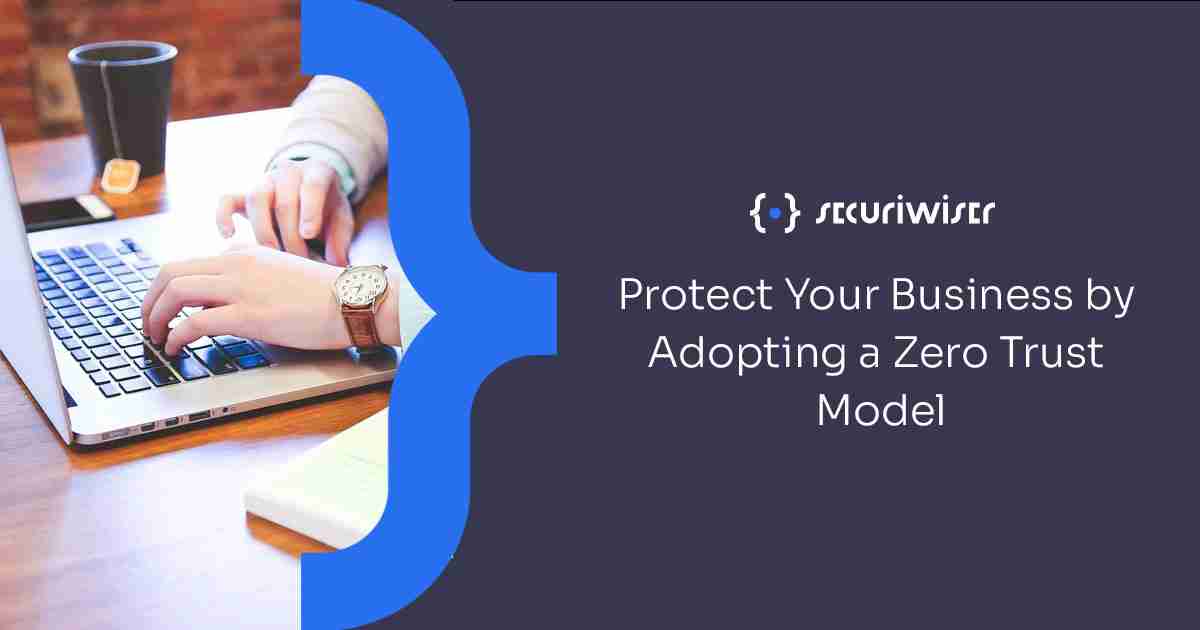Protect Your Business by Adopting a Zero Trust Model
Blog / Protect Your Business by Adopting a Zero Trust Model
4 MIN READ


Businesses have a lot of moving parts nowadays. Modern technology has brought about improvements to business efficiency, but has opened up new avenues for cyberattacks. Previously, a business would be able to easily secure their infrastructure from the outside, allowing employees to freely and easily navigate the network. Nowadays however, a business may easily find itself more at risk from an inside attack.
The Zero Trust model is an answer to this problem. With a Zero Trust model, there is no difference between an employee accessing company files and a hacker trying to steal data for ransom. Everyone is treated as a potential threat.
Zero Trust vs Tradition
Traditionally, a business may have used what is known as the ‘castle and moat’ approach to cybersecurity. The premise of castle and moat is that if a network is heavily protected from the outside, there is less need for high security inside the network.
The main trouble with the castle and moat approach is that there are far more avenues for attack than there used to be. Because of this, an impenetrable ‘moat’ is much harder to successfully build. A security flaw in outsourced software; a bug in the software of an IoT device; a data breach on a cloud storage server – any of these examples could allow a hacker to infiltrate your network. Once the moat has been crossed, a hacker gets free reign of the castle.
A Zero Trust model looks inwards at protecting the network every step of the way. When using a Zero Trust model, if a network is breached, there are more checks in place to make sure the hacker can’t simply access the entire network.
Creating a Zero Trust Network
Managing successful Zero Trust network architecture can be tricky, as it requires constant monitoring of traffic to run effectively. Having multiple verification steps at different points on a network can build up the amount of work required. Because of this, it is essential to assess the facilities you have available to you as a business and decide what resources you can realistically pour in to establish and constantly monitor Zero Trust architecture.
The Protect Surface
When setting out to implement Zero Trust architecture, you must first know your most important assets. The protect surface is anything valuable you need to protect as a business, this includes sensitive data, critical applications, services, and company assets. We have a guide on evaluating threats to your assets here. Establishing your protect surface makes it easy to know which areas of your network need the added security of Zero Trust architecture.
Mapping Transaction Flows
Transaction flow is who is interacting with your important assets and what reasons they may have for accessing them. Finding out why people may need to access certain assets will help you understand what security measures need implementing, and what unusual behaviour looks like when it comes to monitoring traffic.
Implementing Zero Trust Architecture
After evaluating your assets and network transactions you can begin implementing Zero Trust architecture, examples of which will be given in a list below. Following the steps above help you evaluate which assets need to be protected and how in depth the protection needs to be. This means you can predict how much work maintaining Zero Trust will be so you can match it with the resources you have available.
Zero Trust Policy
Creating a Zero Trust policy means looking to your transaction flow map and deciding who should be allowed access to certain areas of a network. Look at the who, what, when, where, why, and how. A Zero Trust policy should dictate when people are supposed to be accessing certain assets, and, using a firewall, should automatically block other users who don’t meet the requirements. Unauthorised access attempts can then be monitored to check for potential threats.
Maintaining Zero Trust
Once Zero Trust architecture has been installed, the real challenge begins. To work effectively, the fundamentals of Zero Trust must be constantly maintained. Logging and monitoring network traffic through areas protected with Zero Trust architecture can give you an idea of who is trying to access your network. It is essential that you keep your Zero Trust Policy updated in order to tighten up security if you find a flaw. Monitoring the flow of traffic will allow you to make changes on the go, tightening or reducing your security as new developments are made.
Zero Trust Practices
Implementing a Zero Trust model involves the use of many different techniques and methods to protect vital areas of your business’s infrastructure. Zero Trust strategies range in complexity, but usually involve the same fundamental idea of verifying every user. Here are some examples of Zero Trust techniques to get you started:
- Firewalls – a firewall is the cornerstone of any Zero Trust implementation. Using a firewall allows you to implement your Zero Trust Policy by whitelisting and monitoring traffic on your network.
- Multifactor Authentication (MFA) – MFA should be used as a way of double-verifying anyone trying to access your network. MFA adds another layer to security, where if a user passes the whitelist, they must verify again using biometrics, physical magnetic stripe ID cards, or mobile PINs.
- Microsegmentation – splitting your network up and isolating vulnerable areas adds yet another layer of security. Microsegmentation allows you to add security measures to individual segments of your network, and cuts off vulnerable areas if a network is breached.
Securiwiser Can Help
Securiwiser can help you in your mission to better your business’s cybersecurity posture. Securiwiser will provide you with an up-to-date analysis of your business’s cybersecurity profile by analysing aspects such as email security, DNS health, and IP reputation, as well as provide information on which areas need improving.
If you are interested in boosting your organisation’s cybersecurity, click here for a free cyber security report.
Previous Article
5 Things to Consider When Choosing a Cloud ProviderHow secure is
your business?
Blog categories
How secure is
your business?